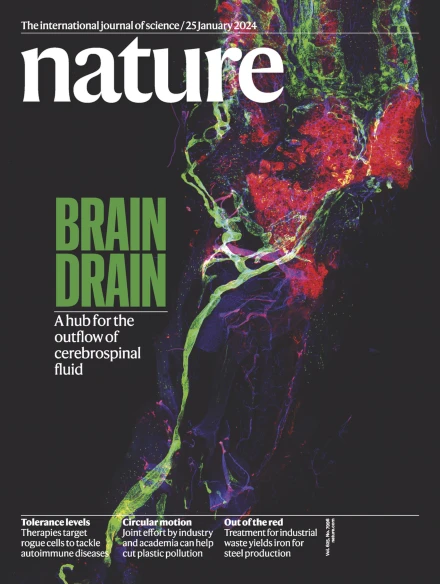Human de novo mutation rates from a four-generation pedigree reference
IF 48.5
1区 综合性期刊
Q1 MULTIDISCIPLINARY SCIENCES
引用次数: 0
Abstract
Understanding the human de novo mutation (DNM) rate requires complete sequence information1. Here using five complementary short-read and long-read sequencing technologies, we phased and assembled more than 95% of each diploid human genome in a four-generation, twenty-eight-member family (CEPH 1463). We estimate 98–206 DNMs per transmission, including 74.5 de novo single-nucleotide variants, 7.4 non-tandem repeat indels, 65.3 de novo indels or structural variants originating from tandem repeats, and 4.4 centromeric DNMs. Among male individuals, we find 12.4 de novo Y chromosome events per generation. Short tandem repeats and variable-number tandem repeats are the most mutable, with 32 loci exhibiting recurrent mutation through the generations. We accurately assemble 288 centromeres and six Y chromosomes across the generations and demonstrate that the DNM rate varies by an order of magnitude depending on repeat content, length and sequence identity. We show a strong paternal bias (75–81%) for all forms of germline DNM, yet we estimate that 16% of de novo single-nucleotide variants are postzygotic in origin with no paternal bias, including early germline mosaic mutations. We place all this variation in the context of a high-resolution recombination map (~3.4 kb breakpoint resolution) and find no correlation between meiotic crossover and de novo structural variants. These near-telomere-to-telomere familial genomes provide a truth set to understand the most fundamental processes underlying human genetic variation. Analysis of more than 95% of each diploid human genome of a four-generation, twenty-eight-member family using five complementary short-read and long-read sequencing technologies provides a truth set to understand the most fundamental processes underlying human genetic variation.


来自四代谱系参考的人类新生突变率
了解人类从头突变(DNM)率需要完整的序列信息1。在这里,我们使用五种互补的短读和长读测序技术,分阶段组装了一个4代28人家族(CEPH 1463)中95%以上的二倍体人类基因组。我们估计每次传递98-206个dnm,包括74.5个新产生的单核苷酸变异,7.4个非串联重复序列序列,65.3个新产生的序列或源于串联重复序列的结构变异,以及4.4个着丝粒dnm。在雄性个体中,我们发现每代12.4个Y染色体新生事件。短串联重复序列和可变数串联重复序列是最易变的,有32个位点在世代中表现出反复突变。我们准确地组装了288个着丝粒和6条Y染色体,并证明DNM率根据重复内容,长度和序列身份而变化。我们发现所有形式的种系DNM都存在强烈的父系偏倚(75-81%),但我们估计16%的新生单核苷酸变异是在合子后起源的,没有父系偏倚,包括早期种系马赛克突变。我们将所有这些变异置于高分辨率重组图(~3.4 kb断点分辨率)的背景下,发现减数分裂交叉与从头结构变异之间没有相关性。这些近端粒到端粒的家族基因组为理解人类遗传变异的最基本过程提供了一个真理集。
本文章由计算机程序翻译,如有差异,请以英文原文为准。
求助全文
约1分钟内获得全文
求助全文
来源期刊

Nature
综合性期刊-综合性期刊
CiteScore
90.00
自引率
1.20%
发文量
3652
审稿时长
3 months
期刊介绍:
Nature is a prestigious international journal that publishes peer-reviewed research in various scientific and technological fields. The selection of articles is based on criteria such as originality, importance, interdisciplinary relevance, timeliness, accessibility, elegance, and surprising conclusions. In addition to showcasing significant scientific advances, Nature delivers rapid, authoritative, insightful news, and interpretation of current and upcoming trends impacting science, scientists, and the broader public. The journal serves a dual purpose: firstly, to promptly share noteworthy scientific advances and foster discussions among scientists, and secondly, to ensure the swift dissemination of scientific results globally, emphasizing their significance for knowledge, culture, and daily life.
 求助内容:
求助内容: 应助结果提醒方式:
应助结果提醒方式:


